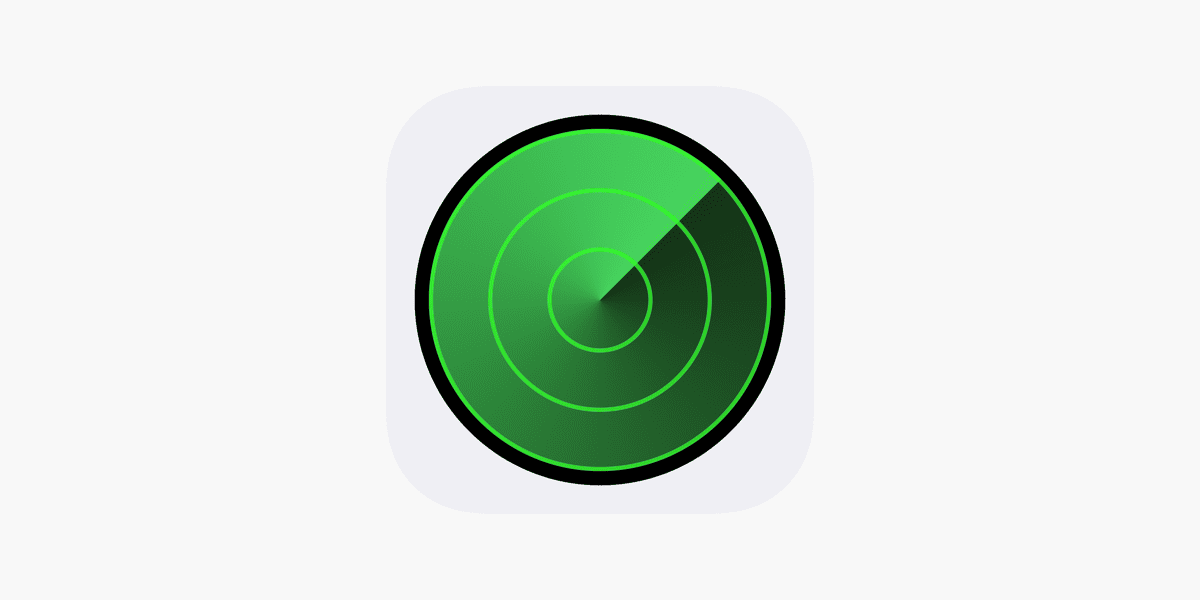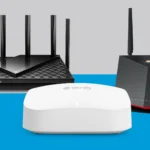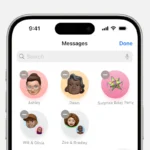Losing an iPhone can be stressful, but Apple’s Find My app makes it easier to locate missing devices with help from friends. The app has evolved to become more user-friendly and accessible, even when you don’t have access to your own Apple device. The “Help a Friend” feature allows someone to use their iPhone to help locate your missing device without needing to sign in with your Apple ID credentials.
If you’ve misplaced your iPhone, a friend can assist by opening the Find My app on their device, tapping the “Me” icon, and scrolling to the “Help a Friend” option at the bottom of the screen. This takes them to a web page where you can sign in with your Apple ID to locate your missing device. The process is simple and secure, respecting privacy while providing practical assistance when you need it most.
Using Find My iPhone to Help Out a Friend
Apple’s Find My iPhone isn’t just for tracking your own lost device—it can also be a powerful tool to help a friend locate theirs. Whether it was left behind at a coffee shop or lost on a hike, Find My iPhone offers real-time tracking, sound alerts, and even directions to the missing device. Here’s a simple guide to walk you through helping a friend recover their iPhone.
🔐 Step 1: Get Your Friend’s Apple ID Info (With Permission)
Before you do anything, you need your friend’s Apple ID and password. This is essential for accessing their iCloud account. If your friend is with you, they can enter their credentials directly on your device for privacy.
⚠️ Never use someone’s Apple ID without their consent. Always make sure they approve before logging in.
📱 Step 2: Use a Device with the Find My App
You can use any Apple device with the Find My app installed, including:
- An iPhone
- An iPad
- A Mac
Alternatively, go to iCloud.com on any web browser.
🔍 Step 3: Log Into iCloud or Use Find My App
- On your device, open the Find My app.
- Tap on Me (bottom right).
- Scroll down and tap Help a Friend.
- You’ll be redirected to iCloud.com in Safari.
- Or, if you’re on a web browser:
- Go directly to iCloud.com
- Click Find iPhone
- Sign in with your friend’s Apple ID.
🗺️ Step 4: Locate the Lost iPhone
Once signed in:
- You’ll see a map with all devices associated with that Apple ID.
- Tap or click the iPhone in question.
- The map will zoom in on its last known or current location.
If the phone is powered on and has internet access, it should show real-time location. If it’s offline, you’ll see the last known location and the time it was last active.
🔔 Step 5: Play a Sound
If the iPhone is nearby but you can’t see it:
- Tap Play Sound to make it ring at full volume—even if it’s on silent mode.
This is especially helpful if it slipped between couch cushions or was left in a bag.
🧭 Step 6: Use Directions
Tap Directions to open the device location in Apple Maps. It will guide you turn-by-turn to the phone’s current location.
🔒 Step 7: Enable Lost Mode (Optional)
If the iPhone is truly lost:
- Tap Mark as Lost (or Lost Mode).
- This locks the phone remotely with a passcode and displays a custom message with your friend’s contact info on the lock screen.
You can also choose to receive updates if the device’s location changes.
❌ Step 8: Erase iPhone (Last Resort)
If there’s concern that the phone has been stolen or can’t be recovered:
- Tap Erase iPhone to remotely wipe the device.
- Once erased, you won’t be able to track it anymore—but your friend’s data will be protected.
Tips to Remember
- Find My iPhone must be turned on in iCloud settings before the phone was lost.
- Battery matters: if the phone’s dead, you’ll only see the last known location.
- If your friend has Family Sharing set up, you might not even need their credentials—you can help locate their device right from your own Find My app.
With the right steps and a little teamwork, helping your friend find their iPhone can be quick and stress-free. Whether it’s nearby or across town, Apple’s tracking tools make recovery easier than ever.
Key Takeaways
- The Find My app includes a “Help a Friend” feature that allows others to help locate your missing Apple devices without using your credentials.
- Location Services must be enabled on the missing device for the Find My feature to work properly with iCloud.
- Apple’s Find My network can locate devices even when offline by using nearby Apple devices to relay location information securely.
Understanding Location Services and Privacy
Location Services is the backbone of Find My iPhone, using a mix of technologies to help locate devices. Privacy features allow users to control exactly what location data they share and with whom.
How Location Tracking Works
Find My iPhone relies on Location Services to track devices. This system uses several technologies working together:
- GPS signals provide precise outdoor location data
- Wi-Fi hotspots help determine location when indoors
- Bluetooth connections detect nearby Apple devices
For Location Services to work properly, the device needs an internet connection. This connection sends location data to Apple’s servers, making it possible to see the device’s position on a map.
When helping a friend find their iPhone, both people need active Apple IDs. The system updates location regularly when the device is on and connected. Even with low battery, the last known location often remains visible for a period of time.
Privacy Considerations and Settings
Apple designed Location Services with privacy in mind. Users can control their location data through several settings:
- Main location toggle – Found in Settings > Privacy & Security > Location Services
- App-specific settings – Control which apps can access location and when
- Share My Location – Choose specific friends who can see your location
Users can also hide the map in location alerts by turning off “Show Map in Location Alerts” in privacy settings. This prevents others from seeing the exact location layout.
For those concerned about privacy, temporary location sharing is an option. Users can share their location for one hour, until the end of the day, or indefinitely. This flexibility helps maintain privacy while still allowing friends to help locate a lost device.
Troubleshooting and Managing Find My Features
When Find My features aren’t working properly, there are several steps users can take to resolve issues and protect their devices. Both daily tracking problems and emergency situations have specific solutions that can help reconnect with friends or recover lost devices.
Resolving Common Find My Friends Issues
Many users experience the “Location Not Available” message when trying to track friends or family. This typically happens when location sharing is disabled or the device is turned off. To fix this, first check if Location Services is enabled in Settings > Privacy > Location Services.
Network issues can also affect Find My Friends. A weak internet connection may prevent location updates. Try switching between Wi-Fi and cellular data to see if that resolves the problem.
If a friend’s location isn’t updating, ask them to:
- Check their battery level (low power can disable location sharing)
- Open the Find My app to refresh their location
- Verify they haven’t accidentally paused location sharing
Sometimes signing out of iCloud and signing back in can resolve persistent location sharing problems.
Recovering Lost Devices and Protecting Data
When a device goes missing, the Find My app offers several important tools. First, activate Lost Mode by selecting the device in Find My and choosing “Mark As Lost.” This locks the device with a passcode and displays a custom message with contact information.
If the device is nearby, use the “Play Sound” feature to help locate it. For devices that may have been stolen, avoid trying to retrieve them personally. Instead, use the “Directions” feature to share the location with authorities.
Activation Lock automatically engages when Find My is enabled. This prevents anyone from erasing and reactivating the device without the Apple ID password, making stolen devices less valuable to thieves.
For devices that can’t be recovered, the “Erase iPhone” option provides a last resort to protect personal data. This remotely wipes all content while maintaining Activation Lock.
Frequently Asked Questions
Find My iPhone offers several features to help locate devices and stay connected with friends. Users often have specific questions about sharing locations, troubleshooting, and privacy concerns.
How can I set up location sharing with a friend on Find My iPhone?
To share location with a friend, open the Find My app on an iPhone and tap the People tab. Select “Share My Location” and choose a contact from the list or enter a phone number or email.
Choose how long to share the location: indefinitely, for one hour, or until the end of the day. The friend will receive a notification to accept the location sharing request.
Both parties must have Apple ID accounts for this feature to work properly.
What steps should I take if I cannot locate my friend’s iPhone using Find My?
First, verify the friend has enabled location sharing with you specifically in their Find My app settings.
Ensure the friend’s device is powered on and connected to the internet, as offline devices cannot transmit location data.
Ask the friend to check if Find My is enabled on their iPhone by going to Settings > [their name] > Find My > Find My iPhone.
If the device still doesn’t appear, have the friend sign out of their Apple ID and sign back in, which often resolves syncing issues.
Is it possible to receive location update notifications for a friend’s iPhone?
Yes, users can set up notifications for when a friend arrives at or leaves specific locations. Open the Find My app, select the friend’s name on the People tab, and tap “Add” under Notifications.
Choose between “Notify Me” or “Notify [Friend’s Name]” depending on who should receive the alert.
Set the location and whether the notification should trigger upon arrival or departure from that location.
Can location be shared between iPhones without the owner’s explicit consent?
No, Apple requires explicit permission from the device owner to share location. The Find My app sends a clear notification when someone requests to see a device’s location.
Users must actively accept location sharing requests, and they can stop sharing at any time.
Even if a device has been added to Family Sharing, each family member controls their own location sharing preferences.
How accurate is the location tracking in the Find My app when locating a friend’s device?
Find My typically provides accuracy within several meters in optimal conditions with good GPS signal and network connectivity.
Urban environments with tall buildings or indoor locations may reduce accuracy due to signal interference.
The app displays a blue circle around the device location – a smaller circle indicates higher accuracy, while a larger circle suggests less precise location data.
What privacy considerations should one be aware of when using Find My to locate a friend’s iPhone?
Users should respect boundaries and only track friends’ devices with clear consent and legitimate reasons.
Apple notifies users when their location is being shared and with whom. A blue bar appears at the top of the screen as a reminder.
Location history is not stored on Apple’s servers long-term, and end-to-end encryption helps protect location data from unauthorized access.
The Find My network allows tracking even when offline, but this feature maintains privacy by using encrypted and anonymous signals from nearby Apple devices.







